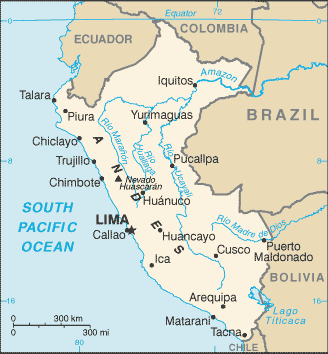 The Japanese Buddhist community Shinnyo-en on Sept. 14 joined with Quechua elders and shamans for a "Prayer for World Peace" at Saksaywaman, the Inca archeaological site just outside Cuzco, Peru. Saksaywaman is a walled complex on the northern outskirts of the city of Cuzco, the former capital of the Inca Empire and today a UNESCO World Heritage site. The event included both traditional Quechua dance ritual and a special fire ceremony officiated by Her Holiness Shinso Ito, leader of Shinnyo-en and daughter of the late Shinjo Ito, who founded Shinnyo-en at Kyoto's ancient Daigoji monastery in 1943. Shinnyo-en is part of the esoteric Shingon Buddhist tradition, which dates to the 9th century CE. (Shinyo-En, Sept. 14; Cusco en Positivo, Sept. 11)
The Japanese Buddhist community Shinnyo-en on Sept. 14 joined with Quechua elders and shamans for a "Prayer for World Peace" at Saksaywaman, the Inca archeaological site just outside Cuzco, Peru. Saksaywaman is a walled complex on the northern outskirts of the city of Cuzco, the former capital of the Inca Empire and today a UNESCO World Heritage site. The event included both traditional Quechua dance ritual and a special fire ceremony officiated by Her Holiness Shinso Ito, leader of Shinnyo-en and daughter of the late Shinjo Ito, who founded Shinnyo-en at Kyoto's ancient Daigoji monastery in 1943. Shinnyo-en is part of the esoteric Shingon Buddhist tradition, which dates to the 9th century CE. (Shinyo-En, Sept. 14; Cusco en Positivo, Sept. 11)

 On Sept. 30, Peruvian President Ollanta Humala and his Colombian counterpart Juan Manuel Santos and their respective cabinet ministers held a rare joint meeting in Peru's Amazon river port of Iquitos. There, they signed a binational accord to launch a joint effort to "cleanse Putumayo"—a reference to the jungle river basin that has for many years been under the virtual control of criminal enterprises. The Río Putumayo, a tributary of the Amazon, forms the border between the two countries in the lawless region. The Colombian side is a key stronghold of the FARC guerillas, which is believed to do business with the criminal gangs that operate freely on the Peruvian side. Santos said "we have common enemies, such as the narco-traffic, illegal mining and cutting of forests." (
On Sept. 30, Peruvian President Ollanta Humala and his Colombian counterpart Juan Manuel Santos and their respective cabinet ministers held a rare joint meeting in Peru's Amazon river port of Iquitos. There, they signed a binational accord to launch a joint effort to "cleanse Putumayo"—a reference to the jungle river basin that has for many years been under the virtual control of criminal enterprises. The Río Putumayo, a tributary of the Amazon, forms the border between the two countries in the lawless region. The Colombian side is a key stronghold of the FARC guerillas, which is believed to do business with the criminal gangs that operate freely on the Peruvian side. Santos said "we have common enemies, such as the narco-traffic, illegal mining and cutting of forests." ( A record-breaking cocaine bust on Peru's Pacific coast points not only to the country's booming production, but also the increasing role of the Mexican cartels in the Andean narco economy. Peru's
A record-breaking cocaine bust on Peru's Pacific coast points not only to the country's booming production, but also the increasing role of the Mexican cartels in the Andean narco economy. Peru's 





Recent comments
1 week 5 days ago
5 weeks 3 days ago
9 weeks 4 days ago
10 weeks 2 days ago
20 weeks 2 days ago
24 weeks 2 days ago
25 weeks 3 days ago
25 weeks 3 days ago
46 weeks 3 days ago
50 weeks 4 days ago